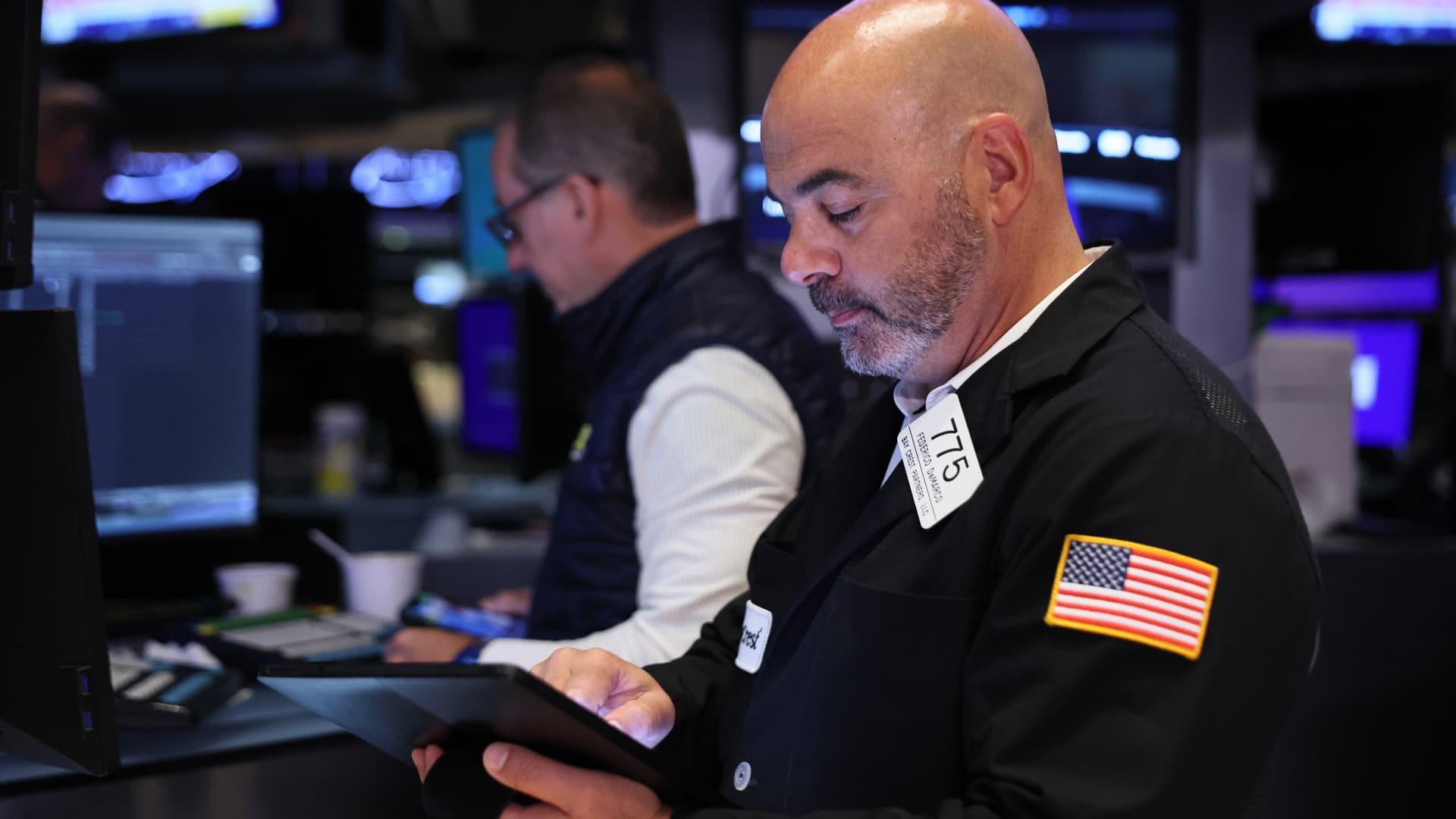The August jobs report next week will be a key hurdle for a stock market that’s at all-time highs heading into what’s historically the worst month for equities. The question of Federal Reserve independence will also add to near term challenges. When it comes to monetary policy, the stakes are high for nonfarm payrolls. As far as Wall Street is concerned, a cut at the September meeting from the Fed is in the bag. Markets were last pricing in a quarter point cut at the Sept. 16-17 meeting. But traders are now questioning what they can expect going forward . With every Fed meeting between now and the end of the year expected to be live, every economic release is getting as much scrutiny as it’s ever done. But there’s another reason for the careful attention. The July jobs data was so poor it drove President Donald Trump to fire the U.S. Bureau of Labor Statistics commissioner , prompting fears of government overreach. The report was also terrible enough to give credence to concerns that the U.S. economy is about to take a turn for the worse because of tariffs, an outcome bearish investors worry the stock market is not at all pricing in. Friday’s employment data could confirm whether those fears are warranted, or if there’s enough resilience for the U.S. consumer to squeak by. The labor market, despite showing major weakness last month, is still near full employment. Inflation, while stubborn in many spots, is not yet alarming investors. “We’re going to learn a lot more about the labor market next week. Is this just a case of, sort of, a ‘low hires, low fires,’ kind of stagnant labor market, or is there some real deterioration that’s starting to unfold?” said John Belton, portfolio manager at Gabelli Growth Innovators ETF . “And historically, when the labor market has started to deteriorate, it has a tendency to quickly deteriorate further.” Some of the early projections show there’s reason for concern. Economists polled by Dow Jones expect the U.S. economy added 75,000 jobs in August, a soft number that’s nevertheless up slightly from the 73,000 jobs posted previously. The unemployment rate is also forecast to creep higher to 4.3% from 4.2%. “I think it’s important to be a bit cautious here,” Gabelli’s Belton said. “You’ve got a stock market that, just at the index level, is trading at relatively demanding valuations. Defensible if fundamentals hold up. But fragile if fundamentals turn.” ‘Alarming’ questions around Fed independence There’s another challenge investors will have to deal with when they return from the holiday weekend: the future of Fed independence. Thus far, stocks have shrugged off Trump’s efforts to interfere with the U.S. central bank. Many traders remain certain that Fed independence, a sacred tenet, will be upheld. Across the world, political interference in central banks have historically led to bad outcomes. Famously higher inflation in Turkey, for example, as long-term economic goals are pushed aside for short-term political aims. Yet more investors are growing alarmed by efforts by the current administration to oust members of the Fed board of governors for new appointees. A court hearing that Trump be temporarily barred from firing Lisa Cook ended Friday without a ruling , a legal battle between the two that will continue to be followed by Wall Street. The potential appointment of Stephen Miran , a Trump nominee who has his Senate Banking Committee hearing scheduled on Sept. 4, could also throw Wall Street into a tailspin next week. “I do find a lot of what the administration is doing with Fed independence to be alarming,” Gabelli’s Belton said. “I’m hard pressed to find unbiased people who are really okay with what’s going on there.” “The Fed needs to remain independent,” Belton continued. “Loss of Fed independence would be a big negative for markets, would drive a higher risk premia in U.S. asset markets, and a situation that we can easily avoid.” At least some assets will gain from the uncertainty the political uncertainty. Gold, for example, could climb to $4,000 an ounce in the short- and medium term, Bank of America said Friday in citing Trump’s threats. The safe haven asset is already up more than 30% this year. @GC.1 YTD mountain Gold futures, year to date September: the worst month All this is in the mix for a market that’s considered by some as priced for perfection. The S & P 500 on Thursday topped 6,500 for the first time, topping the average year-end forecast on the Street though there are still four months left to go in 2025. The broader index is expected to end this year at 6,392 on an average basis, and 6,500 on a median basis, according to CNBC’s market strategist survey . The highest forecast from the survey, from Oppenheimer’s John Stoltzfus, is at 7,100. The lowest? 5,600, from Evercore ISI’s Julian Emanuel. That puts the S & P 500 in a delicate place as it heads into September, seasonally the worst month for equities. The Stock Trader’s Almanac found that the S & P 500 has averaged a 0.7% decline in September, in data going back to 1950, both for all years and post-election years. In recent years, that track record has gotten worse . Over the past five years, the S & P 500 has averaged a 4.2% drop in September. Over the last 10 years, the index has dropped 2% on average. Stocks were on pace for a losing day Friday, but will close out August with gains. The Dow Jones Industrial Average was the month with a 3% advance. The S & P 500 and Nasdaq Composite climbed more than 1%, each. Next week is a shortened holiday week, with markets closed Monday for the Labor Day holiday. Week ahead calendar All times ET. Monday, Sept. 1 Tuesday, Sept. 2 9:45 a.m. S & P PMI Manufacturing final (August) 10:00 a.m. Construction Spending (July) 10:00 a.m. ISM Manufacturing (August) Wednesday, Sept. 3 10:00 a.m. Durable Orders final (July) 10:00 a.m. Factory Orders (July) 10:00 a.m. JOLTS Job Openings (July) 2:00 p.m. Fed Beige Book Earnings: Hewlett Packard Enterprise , Salesforce , Campbell’s , Dollar Tree Thursday, Sept. 4 8:15 a.m. ADP Employment Survey (August) 8:30 a.m. Continuing Jobless Claims (08/23) 8:30 a.m. Initial Claims (08/30) 8:30 a.m. Unit Labor Costs (Q2) 8:30 a.m. Productivity final (Q2) 8:30 a.m. Trade Balance (July) 9:45 a.m. PMI Composite final (August) 9:45 a.m. S & P PMI Services final (August) 10:00 a.m. ISM Services PMI (August) Earnings: Broadcom Friday, Sept. 5 8:30 a.m. August Jobs Report





